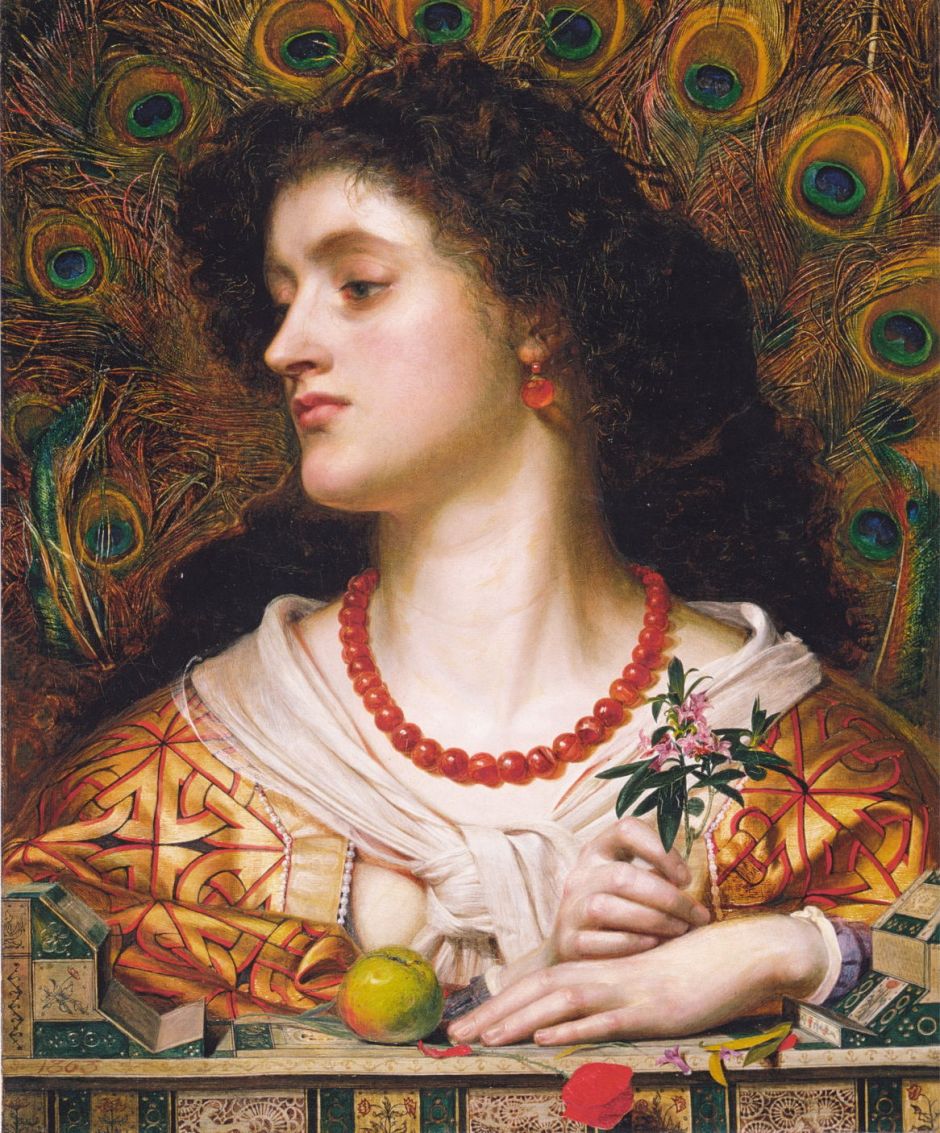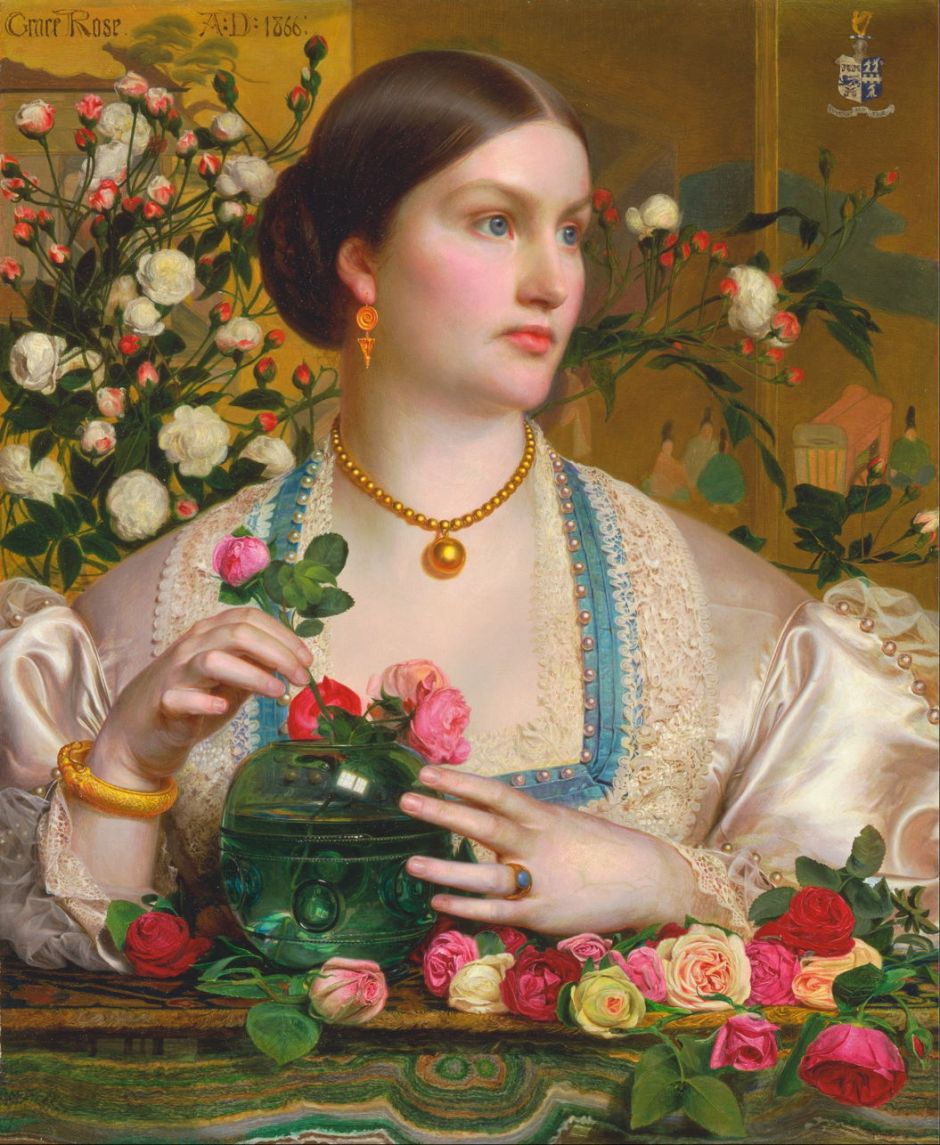When examining Pre-Raphaelite landscape painting, I briefly mentioned the work of Frederick Sandys (1829–1904). His name is often omitted from lists of Pre-Raphaelites, but I hope here to convince you that he should be included.
He was born Anthony Frederick Augustus Sands in Norwich, Norfolk, England, the son of a painter, and was trained by his father and in the Government School of Design in Norwich. Although distant from the artistic hub of London, in the first half of the nineteenth century the Norwich School of painting was thriving under the leadership of John Sell Cotman (1782-1842). A precocious draftsman, Sandys quickly established himself making drawings and etchings. He moved to London by 1851, exhibiting for the first time at the Royal Academy in that year, and in 1855 changed his last name to Sandys.
His first contact with the Pre-Raphaelite Brotherhood was in 1857, when he was working on an engraving; he made friends with Dante Gabriel Rossetti, but remained on the periphery of the Brotherhood itself.

One of his earlier paintings influenced by the Pre-Raphaelites, Queen Eleanor (1858), draws on the legend that Queen Eleanor of Aquitaine, wife of King Henry II of England, killed his mistress, the fair Rosamund (Clifford). Henry was supposed to have concealed her within a complex maze in his park at Woodstock, near Oxford. When Eleanor learned of this, she managed to find her way through the maze to the house at its centre, where she gave Rosamund the choice of drinking a bowl or cup of poison, or dying by the dagger.
Eleanor is shown in countryside (but not apparently negotiating the maze, for which she used a ball of thread), bearing a chalice of poison, and holding the handle of the dagger in her left hand. In fact the whole legend is thought to be false: Henry admitted his affair in 1174, following which Rosamund retired as a nun to Godstow Abbey. Nevertheless, Eleanor and Rosamund were favourite subjects for Pre-Raphaelite paintings.

Mary Magdalene (c 1859) is an unusual treatment of a very popular subject, the presumptively ‘fallen’ woman who became, in effect, a disciple of Christ. Sandys’ model is decidedly fair and northern European, and lost in deep thought. Although there is nothing fleshly about this painting, it has similarities with the increasingly Aesthetic portraits of Fanny Cornforth which Rossetti was starting to paint at this time.
From 1859, his drawings became very popular as prints, and were published in major weekly magazines. He did not, though, illustrate books.

Whitlingham, Norfolk (1860) contrasts with Rossetti’s work, being a pure landscape of great beauty in its fleeting twilight; Rossetti does not appear to have painted any landscapes as such.
Sandys visited Holland and Belgium in 1862.

Vivien (1863) continues to run in parallel with Rossetti’s works at the time. The Vivien referred to is the femme fatale in Tennyson’s cycle of narrative poems Idylls of the King, published from 1859-1885, which is a re-telling of parts of Arthurian legend. Vivien used her looks to seduce Merlin and learn his secrets.
The apple is likely to refer to Eve and original sin, and she wears bright red jewellery which may be a symbol of moral laxity. Even more appropriately, his model was Keomi Gray, with whom Sandys had a long affair resulting in four children, although his earlier marriage was never dissolved. Gray also modelled for Rossetti and other Pre-Raphaelites, but by the time that he had completed this painting, Sandys was living with an actress, Mary Emma Jones, who bore him at least nine more children.

Morgan-le-Fay (1863-64) is another powerful enchantress from Arthurian legend, the term fay referring to a sorceress. An apprentice of Merlin, some accounts portray her as both a sorceress (as shown here) and a wanton woman – another femme fatale. Among her many lovers was Merlin, and she was an indirect instrument of the death of King Arthur.
Sandys casts her as an alchemist-sorceress, working on mysterious spells. Behind her is a large weaving loom, which may be a reference to other stories such as that of the Lady of Shalott.

Grace Rose (1866) appears to be a more conventional portrait, with some gentle allusions to Japonisme in the paintings on the screen behind.
For much of 1866, Sandys stayed with Rossetti in his house in Chelsea, London, and they went on a walking holiday together. However, by the end of that year the pair fell out, with Rossetti accusing Sandys of copying his work.

Love’s Shadow (1867) is one of the most emotionally-expressive of his many paintings of femmes fatales during this Pre-Raphaelite phase. It may be intended to represent jealousy, and Sandys used his partner, Mary Emma Jones, as his model.

Sandys’ painting of Medea (1866-68) is possibly his best-known work today. Medea is a leading character in the Greek mythological story of Jason and the Golden Fleece. She is the sorceress, daughter of King Aeëtes of Colchis, who falls in love with Jason. She strikes a deal with Jason in which she provides him with assistance (in the form of her magic) in his quest for the Golden Fleece, provided that when he completes that successfully, they marry.
Sandys shows her at work, preparing a magic potion for one of Jason’s missions. In front of her is a toad, and other ingredients. Behind her, in a gilt frieze, is Jason’s ship the Argo. Medea is another popular theme in paintings, and not just those by Pre-Raphaelites. Despite the fine depiction and Medea’s intense stare, this painting was rejected by the Royal Academy in 1868.

Isolda with the Love Potion (1870) is one of Sandys’ late Pre-Raphaelite or Aesthetic paintings, and shows another femme fatale, Isolde of the legend and Wagner’s opera of Tristan and Isolde (Tristan and Iseult). The opera had only received its première five years earlier, although its next production did not occur until 1874.
In the operatic version, Isolde is an Irish princess who is betrothed to Marke, the King of Cornwall. Tristan, the adopted son of King Marke, travels to Ireland to bring Isolde back to Cornwall. The pair drink what they believe is a poisonous potion, which instead of killing them both, makes them fall in relentless love with one another. This was later featured in John William Waterhouse’s famous painting Tristan and Isolde with the Potion (1916).
Sandys shows only Isolde, the cup of poison in her right hand, looking into the distance. The floral language – red roses in particular – is symbolic of love.

During the 1870s and thereafter, Sandys concentrated on his engravings, some wonderful landscape paintings of the flatlands and broads in Norfolk, and portraits. This, of Julia Smith Caldwell (c 1890), is one of his best, with its image of a bird (a peacock or pheasant) on the wall behind, in near-continuity with the woman’s hair, and suggestive of a halo.
I think that Rossetti was being unfair: Sandys was perhaps more skilled as a draftsman and realist painter than he was at composing completely original works of art. But I do not think that the evidence shows him to be a plagiarist – indeed in several of his paintings he was manifestly as original as other Pre-Raphaelites.
Reference

